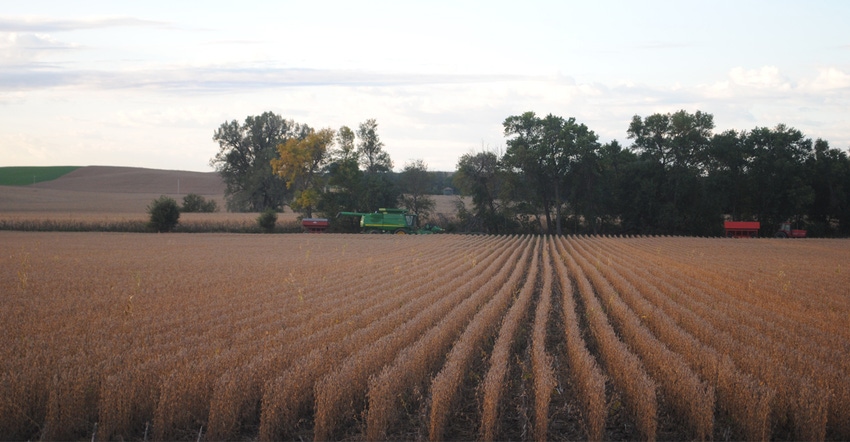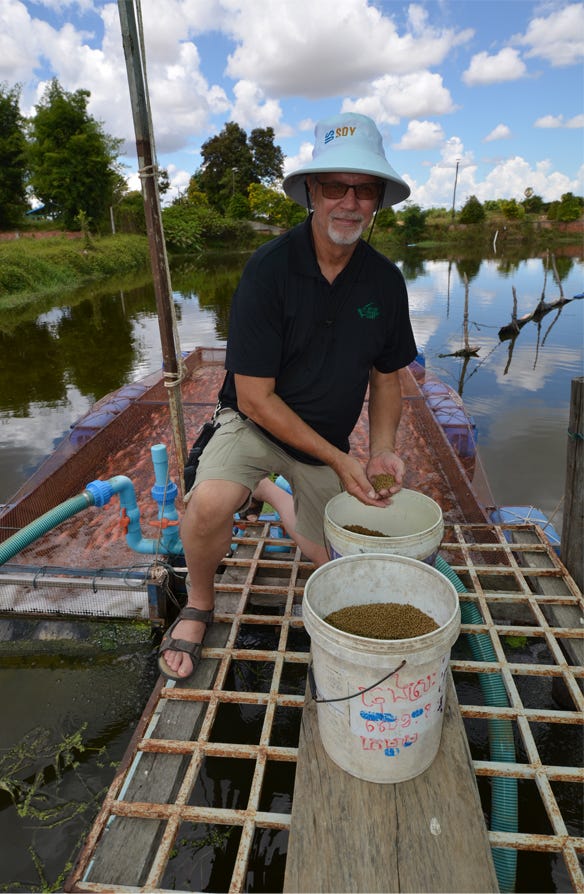
Greg Greving farms near Chapman, Neb., with his sons Shane and Jeremy, but earlier this summer, he found himself presenting a session on the productivity, sustainability and conservation practices of U.S. soy and American soybean farmers at the Third International Sustainable Agricultural Intensification and Nutrition Conference in Cambodia.
Greving, who serves as a United Soybean Board director, joined a powerful contingent of American producers and trade representatives from the American Soybean Association and the ASA World Initiative for Soy in Human Health (WISHH) program for the conference and tours in Cambodia.
Greving didn’t make the trip just to promote soybeans to Cambodia and present the sustainability of U.S. producers to the world. He wanted to build relationships that would help over the long haul to market more U.S. soybeans into the evolving and expanding aquaculture market in Cambodia.
Boost from U.S. beans
While the country buys soybeans from South America and the U.S., soy from U.S. producers offers increased essential amino acids that are important for swine, poultry and aquaculture production, Greving says.
“When you are over there ‘hitting the bricks’ and meeting people,” Greving says, “the farmers there can see that advantage. U.S. soy may cost a little more per ton, but they prefer American soy and soybean meal.”
Greving adds, “I have traveled for years, and I don’t care what country you are from, farmers are still farmers. We come from the same mold.”
He described one aquaculture farmer he met who raised snake head fish and had been mixing his own custom feed, which included cooking this feed and making a kind of paste out of it that he could spread on the water for the fish to eat. In another pond, he fed floating fish food that included U.S. soy.

PROMOTING SOY: Greg Greving of Chapman, Neb., serves as a director on USB. He recently traveled to Cambodia with other U.S. representatives to talk with aquaculture farmers in that country about U.S. soy.
The manufactured feed cost a little more, but the farmer brought his fish to market weight 50% to 60% faster than the fish he fed his homemade paste. “So, he was able to turn those ponds around quicker,” Greving explains.
“The aquaculture industry in Cambodia includes independent farmers and small cooperatives and an industry association,” Greving says.
Cambodia cannot raise soybeans. With so much U.S. soy trade riding on the success of the aquaculture industry in the country, the U.S. Soybean Export Council helped fish farmers there by funding raceways in their ponds and production facilities to get fish to market in less time.
“The Nebraska Soybean Board also helped fund aerators for their ponds, which helps increase production efficiency,” Greving says.
More efficient
Both of these projects have helped farmers in Cambodia raise their fish more sustainably and efficiently. USSEC has been a front-runner in the development of raceways, with the first such projects being established in China.
“The overall goal is, of course, to have Cambodia feeding 100% U.S. soy,” Greving says. “The farmers want U.S. soy. Right now, about 85% of their soy comes from the U.S.”
He was excited to be a part of the panel discussion at the conference, because fish farmers are enthusiastic, and the panel picked his brain with good questions about U.S. soy. “They are eager to make their association stronger, and they are willing to have a conversation about U.S. soy and to listen to us as we promote our products,” he adds.
While such trade missions are all part of his job as USB director, Greving and his sons keep busy in Chapman, not only raising soybeans, but also non-GMO soybeans, regular yellow corn, non-GMO yellow corn, white corn, non-GMO white corn, seed corn for Pioneer and popcorn for nearby Preferred Popcorn, which is based in Chapman.
He brings his wealth of knowledge and ability to talk with other farmers, in the U.S., Cambodia or other parts of the world, to help build relationships that will no doubt garner trade benefits down the road.
“In the end, people do business with people,” Greving explains. “Domestic use is very important, but whatever the market is, domestic or international, it is like your tractor. You need to get up close to it and check the oil and maintain it. It’s the same way with international trade or domestic demand. You just can’t beat face-to-face contact. That’s why we are successful. We are going over there and talking with people.”
Learn more about these efforts at wishh.org.
About the Author(s)
You May Also Like






